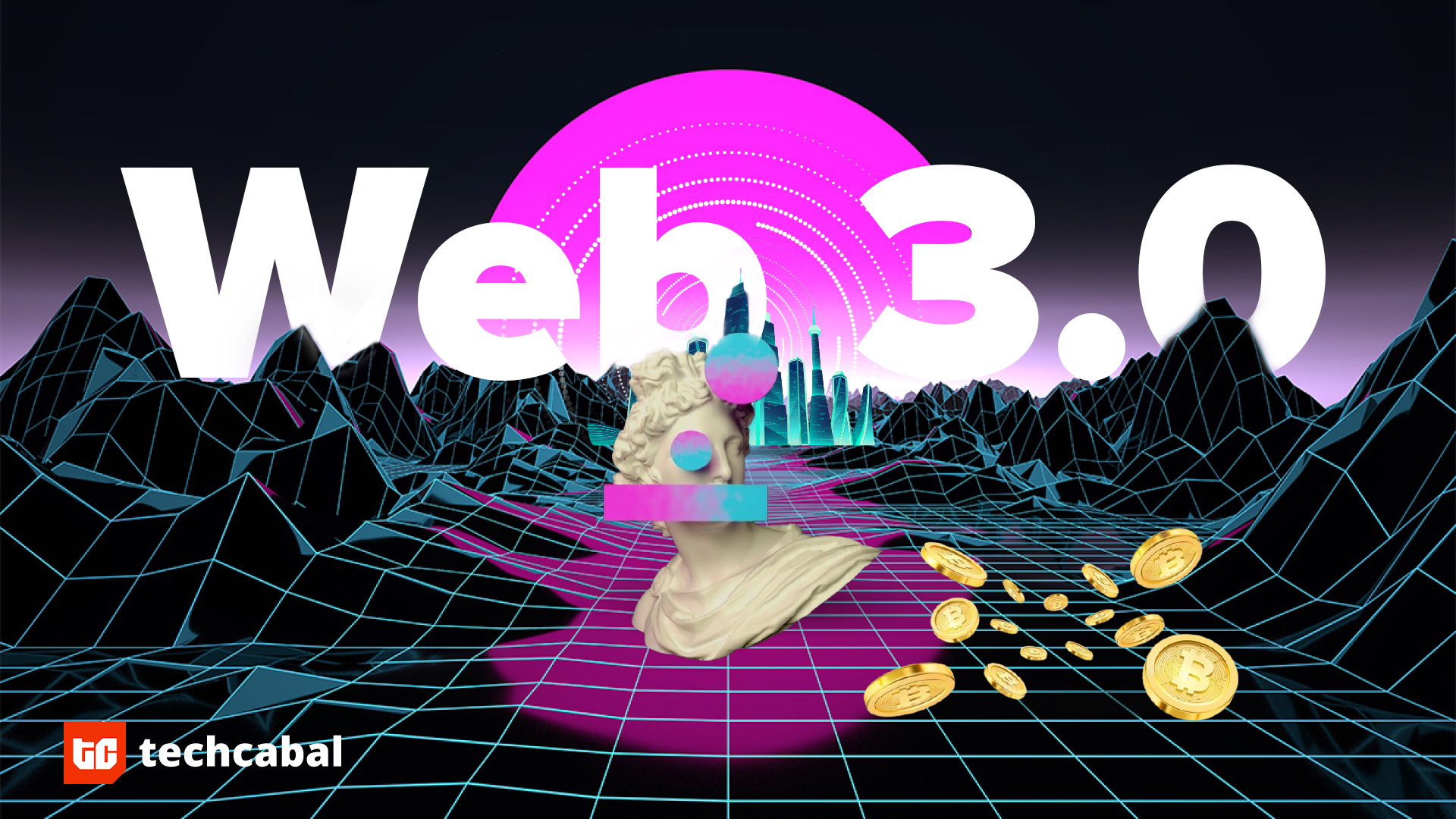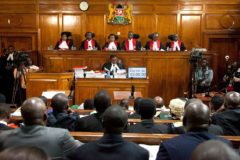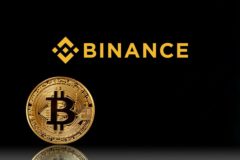Venture capitalists (VCs) and investors in Silicon Valley are saying the internet will evolve to become a place where users will be able to run their own servers, control how their data is used and shared by third parties, own digital property, and have access to a seamless and borderless payment system based entirely on the internet. But not many people have a clear picture of this great vision.
To explain it in one word, Web3 is all about decentralisation—from platforms Meta, Alphabet (Google), and Amazon; governments; and the traditional financial system. By placing power in the hands of individuals instead, Web3 promises to deepen the democratisation of the internet.
To help you understand this promised new dispensation of the internet, let’s take you through the origins of the previous and current versions of it.
A brief history of the internet
Web 1.0 (Web1), the earliest version of the internet, existed roughly between the early 1990s and mid-2000s and was characterised by web pages that were static or read-only. This version of the internet was built by web developers to deliver mostly texts and graphics to participants, who could only consume the content but not interact with it. This version is considered decentralised because it used open-source internet protocols from the 1970s and 1980s, where anyone could build on them without permission from any quarters.
After Web1, came Web2—the version we have now—which is a product of the Dotcom Bubble burst, where the initial rush of investments in internet-based companies yielded losses. This was historic as it helped filter out shams and highlight the real success stories, which laid the foundation for subsequent successful internet companies. While Web2 can be explained to be when the internet became an interactive and a social web—where everyone with access to it could create content—it is much more than that.
A year and a half after the term “Web 2.0” was popularised, there was still a lot of debate as to what it meant. At some point, it was even labelled a meaningless marketing buzzword. (You might have heard this said about Web3 now.)
Web 2.0 is characterised by tech companies that build their own platform on the free layer of the internet and lock it in while providing a rich user experience that prevents users from wanting to leave. In this version of the internet, apps are built in a way that allows users to become creators. YouTube, Google, Instagram, Twitter, Facebook, and other social media are some popular examples of Web 2.0 applications.
Web2 companies build sleek and revolutionary apps that become popular quickly, and as the app’s popularity increases, so does its user base. While users can access these applications for free, they pay by inadvertently offering up their personal data, which Web2 companies sell to advertisers and sometimes political campaigners. Consequently, some of these companies have grown to become the most valuable in history—in less than two decades.
Since these web apps are controlled by a single internet company, users can only use them as long as the company wants them to. This is one of the reasons ethereum co-founder, Vitalik Buterin, decided to abandon centralised systems and, subsequently, create the widely used cryptocurrency. The Russian-Canadian programmer wrote on his personal website: “I happily played World of Warcraft during 2007–2010, but one day, Blizzard [the maker of the game] removed the damage component from my beloved warlock’s Siphon Life spell. I cried myself to sleep, and on that day I realised what horrors centralised services can bring.”
All these confer so much power on these companies and make data breaches more dangerous and frequent. Additionally, governments have used centralisation to bully internet companies to censor or shut down the accounts of dissidents. This is usually because the government knows the exact company and centralised servers it is targeting.
Is Web3 the next version of the internet?
“Web3” was coined in 2014 by Gavin Wood, president and founder of Web3 Foundation, and he said then that it was going to be the next version of the internet. At the time, Wood had just developed ethereum, the cryptocurrency whose prominence and market size is behind only bitcoin.
Web3 will be built on the blockchain—a network of multiple servers (peer-to-peer nodes) working independently from different parts of the world. But what is truly enticing about Web3 is its strong financial implications—also tied to cryptocurrency. Proponents of Web3 believe it will remake the way the world works—reshaping organisations, money, value, rights, the internet, and even liberal democracy.
At the core of Web3 is decentralised finance (DeFi), which aims to take power away from traditional governmental institutions and corporations. The term “DeFi” was coined in a Telegram group by a community of software developers and entrepreneurs who sought a name for a new financial system that would be automated, outstrip traditional banks, and place a premium on individualism (as against institutions) by using a blockchain. As a matter of fact, black people are quite certain that DeFi or crypto presents the key to a better future for them. So, it’s not surprising that they would seek refuge in a system that doesn’t centre their exploiters.
Web3 intends to disrupt the way startups, businesses, and organisations are run, through decentralised autonomous organisations (DAOs)—a social community of like-minded people who create rules and regulations embedded in programming code called a smart contract and may issue governance tokens. In comparison to traditional companies, DAOs have a democratised organisation. The governance of DAOs is based on community. All the members of a DAO need to vote for any changes to be implemented.
In DAOs, decisions regarding the design of products and spending of funds can be made only if members vote and an agreement is reached. In September last year, the Blockchain Nigeria User Group, a group of blockchain developers, created one of Africa’s first DAOs, called BNUGDao.
That brings us to decentralised applications (dApps), which are powered by smart contracts—a decentralised network, instead of a single server. A dApp may feel like your regular app, but it uses the ethereum blockchain for data storage and smart contract for its app logic. Examples of dApps include OpenSea, Rarible, Metamask, Audius, etc.
Who are Web3’s champions?
In this thread republished as an article, Andreessen Horowitz partner, Chris Dixon, who has been called the “King of Web3”, in an argument in favour of Web3, wrote: “Tokens align network participants to work together towards a common goal—the growth of the network and the appreciation of the token. This fixes the core problem of centralised networks, where the value is accumulated by one company, and the company ends up fighting its own users and partners.”
It is important to note that Dixon’s firm has invested a massive amount of money in cryptocurrency companies and stands to gain heavily from the success of Web3. This is, in fact, why some other tech founders like Jack Dorsey and Elon Musk believe that it is just a marketing ploy by rich investors to further enrich themselves.
While some believe that the decentralisation that Web3 proposes will come from ethereum, at the polarising end are people like Jack Dorsey who believe that bitcoin, not ethereum, is the only cryptocurrency that is truly decentralised.
One more problem: This version of the internet could be difficult for ordinary users to adopt, as they would need high technical literacy to use blockchain-based internet products. That is why Nigerian crypto entrepreneur, Yele Bademosi, started out his Web3 development plan in Africa with Breach, a platform that uses newsletters, blog posts, quizzes, etc to teach Africans complex Web3 topics.
“To those who don’t believe, everything is too early until it’s not. My general focus is on builders and believers. And through the products that we build and the traction that we will get, we get more believers over time,” said Bademosi, who is also the founder of Nestcoin, an African company that is building in the Web3 ecosystem with products like a pay-to-earn-crypto game, Metaverse Magna; the earlier-mentioned publication Breach; and a DAO.
An internet version where it’s easier to monetise content?
If you’ve spent time on Twitter, you must have seen discussions on why Web3 technology, like non-fungible tokens (NFTs) powered by ethereum, are either useful or worthless evidence of ownership of digital assets. In case you don’t know, NFT uses blockchain technology to allow individuals and artists to claim ownership and sell their digital assets.
Last week, OpenSea raised $300 million and is now valued at $13 billion. The company, which was founded in 2017, hugely benefited from the huge investment in NFT that dominated last year and facilitated $14 billion worth of transactions, representing a massive increase from a now meagre $22 million recorded in 2020. It is important to note that OpenSea charges a 2.5% transaction fee and, this year already, trading volume has passed $1 billion.
African creators, like others around the world, have benefited from NFT: Nigerian artist Jacon Oshinachi sold 3 NFT arts worth $70,000 in just 10 days; South African artist Norman O’Flynn sold the country’s first-ever NFT for around $35,000 in March; and, in April, Kenyan marathon runner Eliud Kipchoge sold highlights of his career as NFTs for $50,000. Projects like Art X’s Reloading…, in partnership with digital art marketplace SuperRare, are part of an effort to support the unprecedented rise of NFTs on the continent.
Proponents of Web3 believe it is a perfect opportunity for content creators to monetise their content. “Blockchain is going to allow information that shouldn’t be free to not be free,” explained Mike Novogratz, an entrepreneur who has half of his $700 million net worth in crypto assets.
Web3 wants to make it so that content creators make money. Web3 promises to give creators a fair share of what they contribute. By using the NFT technology games like Axie Infinity, Web3 has made it possible for people to make a living from playing—as much as $2,000 monthly.
An opportunity for builders
Web3 is an opportunity to build an entirely new tech ecosystem crypto. “When I moved back to Nigeria in 2015, there was a lot going on in the ecosystem—community related activities, developers training programmes, early-stage investors putting money in early-stage founders. I think it’s the same thing all over again. We need to build an ecosystem,” said Bademosi.
NFT gaming is a huge part of Web3, and like Metaverse Magna, Thrill Digital has built a crypto gaming product, Astra, that will allow players to win real-life luxury fashion.
These startups will go ahead to hire hundreds of designers and developers to build out these ideas. A huge opportunity such as this will create opportunities for developers on the continent and prompt more of them to learn relevant languages and stacks. This will increase Africa’s chances of not only supplying the world with developers that can build emerging technology products—as there is a deficit—but also building out crypto-native products that will scale globally.





















